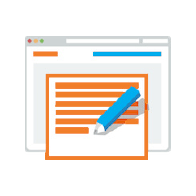Musika Quick Stats
25 Years
Since We Started
41,456+
Happy Customers
10,769
Cities with Students
3,123
Teachers in Network
Lesson Special - Up to 20% OFF! Get Started Now with a Risk-Free Trial!
Here are just a few of the many teachers offering Piano lessons in Tucson . Whether you are looking for beginner guitar lessons for your kids, or are an adult wanting to improve your skills, the instructors in our network are ready to help you now!
Instruments: Piano
I praise effort and a good attitude! I know that learning music is like learning a new language along with hand-eye-ear coordination. Positive reinforcement and clear guidance is a must. I also encourage parent and family involvement with lessons so a student feels the support and environment necessary for long term interest. I teach each student with individual attention and realistic goal setting fit for the student and parents interests. Read More
Instruments: Piano Guitar Bass Guitar
I accomodate to anyones learning habits. For young kids i find what songs tey love most and provide teaching through those songs, its incredible how fast they learn that way. Usually use books like essential elements or begginers guide. For adults i focus more on explaining the process of each thing and the whys that come with playing,making sure they open their minds to all the methods of Playing. Read More
Instruments: Piano Guitar
I believe in teaching music theory as well as technic and expression, no matter how young the student is. I believe the piano is a wonderful springboard to learning and exploring other instruments.For piano the student will study out of the theory and lesson books. Other types of finger excersizes and supplemental music will be used, there is a ton of free music online!I may also use other aides to teach the student such as flashcards, musical games, note finders, andcomputer games and sites.For the guitar I typically use Mel Bay's Modern Guitar Method but then Ialso use lots of music found online free. Read More
Instruments: Piano Guitar Trumpet Trombone Saxophone Oboe Music
I love making music and helping students to be confident making music. I know that life can get busy and students won't always be able to practice every day, so I set realistic goals for them and emphasize that even just a little bit of (focused) practice is much better than no practice at all. The most important thing is that students feel like they are making progress and are enjoying the process, rather than checking off a box of drudgery every day just to check it off. Read More
Instruments: Piano
I love teaching piano to young ones and watch their convidence grow. I remember when at the age of 8, learning piano that my enthusiaism was overflowing, My instructor was strictly classical and I discovered Boogie. I was so dissappointed not to broaden my horizons and we parted ways. Music appreciation in public school gave me a wide range of influence to choose from. Sharing with other musicians also gave me experience to grow. Read More
Instruments: Piano Voice
I have been a performer and teacher in the greater Tucson area for the past 10 years. I currently teach voice and piano lessons from my home studio on the northwest side of town, and perform/music directs with the Arizona Rose Theatre Company. I am happy to teach students of all ages and abilities, especially students with special needs. I am a fully certified music teacher in the state of Arizona, and have an up-to-date fingerprint clearance card. Read More
Instruments: Piano Voice Music Keyboard
What advice do you have about practicing effectively?
Slow, Slow, and SLOWER! Slow it down to perfect those tricky rhythms, articulations or slight gradations for those crescendos and decrescendo. To me slow practice is the best way! I still use it all the time in my own practicing! Don't just play slow though but incorporate dynamic shadings at the same time. Anyone can play loud and fast, but to play slow and pianissimo will give you a much more commanding technique. For a tricky rhythmic section I have a set routine I use. 1. Play it slow and Mezzo Forte 2. Play it slow and Pianissimo 3. Play it slow and with full dynamic gradations. Practice these steps first without pedal then with pedal. Repeat this process on a daily basis slowly building up the tempo until you have perfected the passage!
What does a normal practice session look like for you?
Well I really don't practice my scales and exercises anymore, as I spent so much time with them in my earlier years. I use to practice 8 hours a day during my college years and had time for all the scales, arpeggios and technical exercises I wanted. With less hours to practice now I have to take a much more efficient approach. Besides, technique is found in the music. I usually only practice 3 or 4 different pieces each week. I do a lot of slow and mezzo forte work without pedal to master any tricky passages. I alternate that slow work with up to tempo work as well so I can check my progress. I also use my practice rhythms to work more technical passages. Finally, when things are very close I start using a metronome to perfect my rhythm and tempo.
What musical accomplishments are you most proud of?
I take most pride in my own compositions and arrangement for piano. I have gone through many styles from classical to new age to rock to avantgarde to western swing! I have most recently come full circle and returned back to a classical foundation. It has a strong classical base but at the same time uses experimental piano techniques and yet manages to stay accessible. I am currently working on a large multi-movement work for piano called "Project Genesis" which I hope to start recording soon. It's sort of a concerto for piano without orchestra where the piano provides the accompaniment. It will require many overdubs to achieve my vision. It will certainly be an epic accomplishment for me when finished! I also write my own piano arrangements of orchestral works. Among them and most recently is my arrangement of the Adagietto from Mahler's 5th symphony, which I will be uploading to youtube soon
Did you have a teacher that inspired you to go into music? How did they inspire you?
I have three main teachers who were the greatest influences upon my own piano studies. During my earliest college years at Mesa College I was studying with Ken Ard who really had me focus on the rudiments such as scales, arpeggios and progressions. He was always flexible in his approach with me and would basically help me with any style I wanted to work on. When I entered San Diego State University I began studying with Karen Follingstad. It was her who really opened up the passion in the music for me. She had focus first and foremost in my musical expression. My last and greatest influential teacher was George Katz. It is Mr. Katz who taught me about weight distribution but most importantly how to shape a phrase. He taught me all the finer things in interpretation which I use to this day!
25 Years
Since We Started
41,456+
Happy Customers
10,769
Cities with Students
3,123
Teachers in Network
Trusted as the industry leader, for over 21 years the teachers in our network have been providing Piano lessons in Tucson to students of all ages and abilities.
We'll then reach out to the teachers for you.
Schedule the risk-free trial lesson directly with the teacher.
Continue with that teacher or try someone else.








Robert
I am interested in piano lessons for my daughter. She is just a beginner and we don't have a piano, so I want to understand if this could work. Thanks
kara
I'm looking for a piano teacher that will come to the house. I have a grand piano. I haven't played since I was a child and would like to learn to play again.
Heather
My son (7) and daughter (9) are interested in learning electric guitar (son) and keyboard (daughter). Ideally I'd love to find someone who could teach them both!